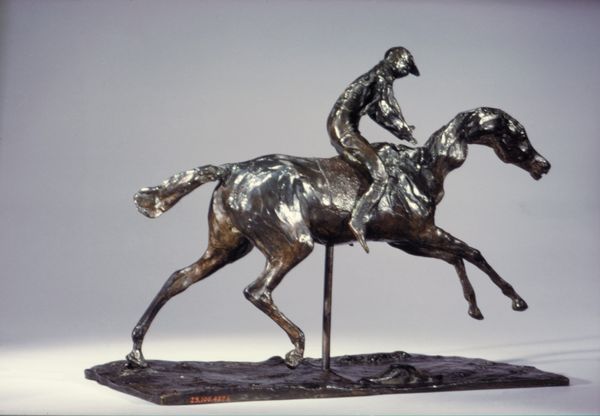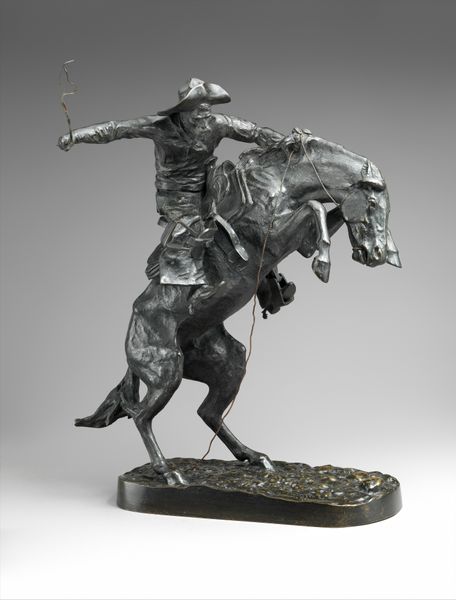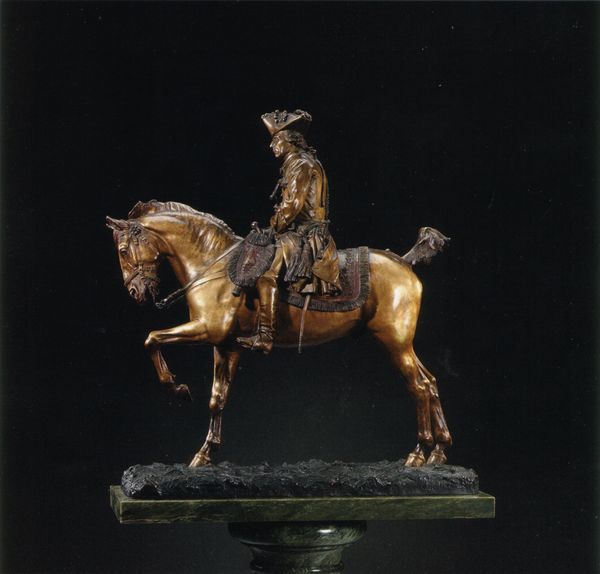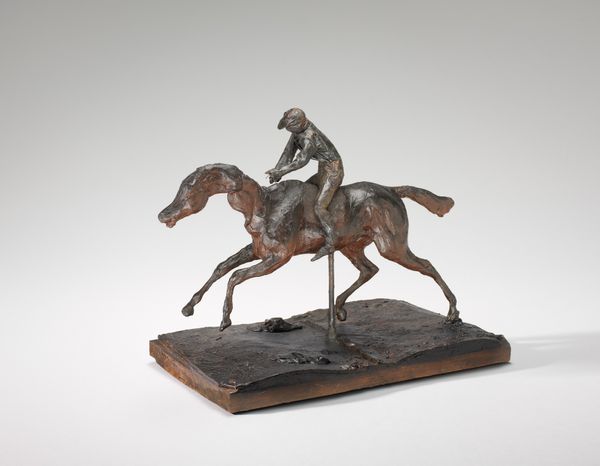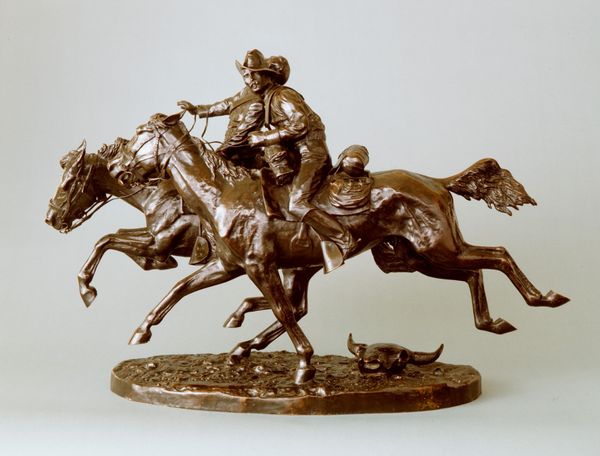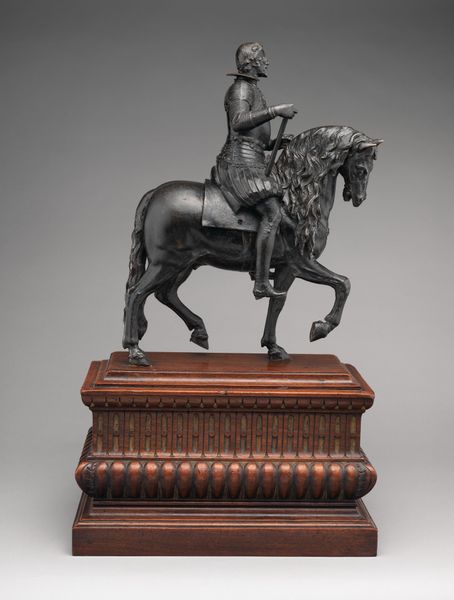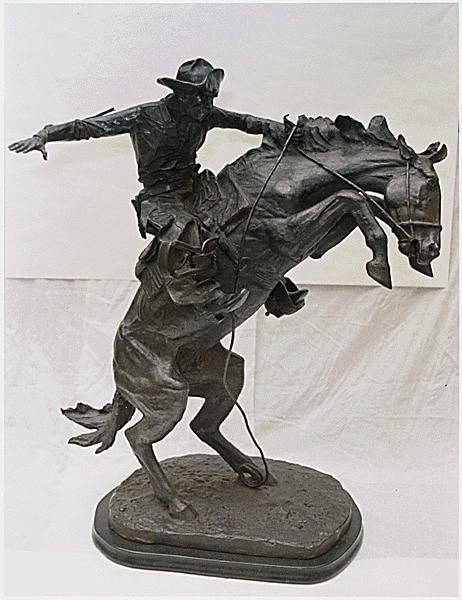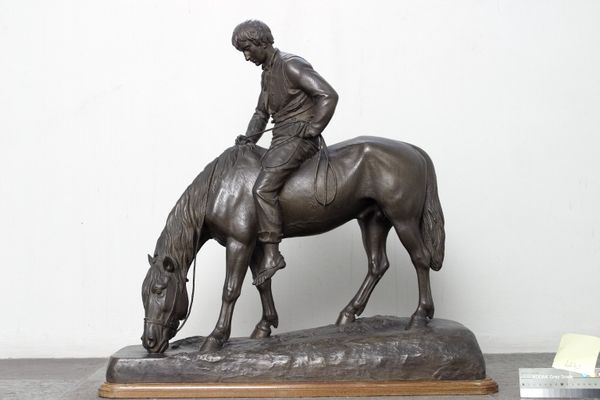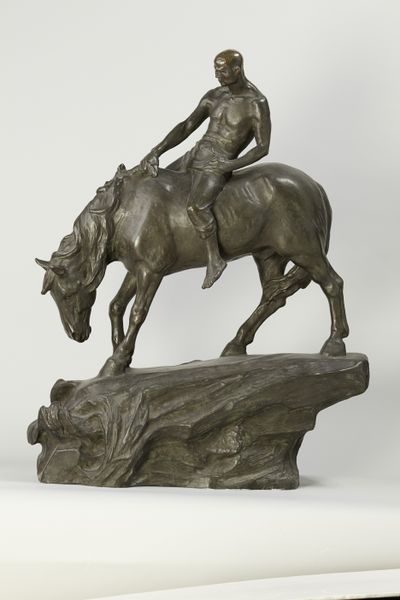
bronze, sculpture
#
sculpture
#
bronze
#
figuration
#
sculpture
#
romanticism
#
horse
#
history-painting
Copyright: Public domain
Editor: This bronze sculpture depicts Caesar Crossing the Rubicon by Jean-Léon Gérôme. It has such a theatrical, dramatic feel to it. The figure of Caesar is intense, almost reckless, urging his horse forward. What statement do you believe Gérôme was trying to convey through this dramatic composition? Curator: Gérôme, deeply invested in history painting, was undoubtedly aware of the political symbolism embedded within this very moment. The Rubicon represented the boundary between Gaul and Italy; by crossing it with his army in 49 BC, Caesar defied the Roman Senate and effectively initiated civil war. What Gérôme emphasizes, though, is a specific vision of leadership. Editor: You mean by staging Caesar as such a dominating personality? Curator: Precisely. The romantic lens through which Gérôme and others interpreted Caesar casts him as a powerful individual willing to challenge established power, for better or worse. Think about the institutions – the museums, the academies – that supported artists like Gérôme. What message did celebrating figures like Caesar send to their audiences? The sculpture becomes not just a historical depiction, but a statement about the era in which it was created, the latter half of the 19th century. Editor: So the art itself can also have some agency, becoming political just by depicting some subjects and not others. It sounds like it goes both ways. I suppose the real focus becomes asking "why this, and why now?" Curator: Exactly. Questioning the historical moment of a work’s creation often gives us insights we couldn’t get from the surface. Editor: Thanks, that makes so much sense now. I never thought to think of history paintings like this.
Comments
No comments
Be the first to comment and join the conversation on the ultimate creative platform.

